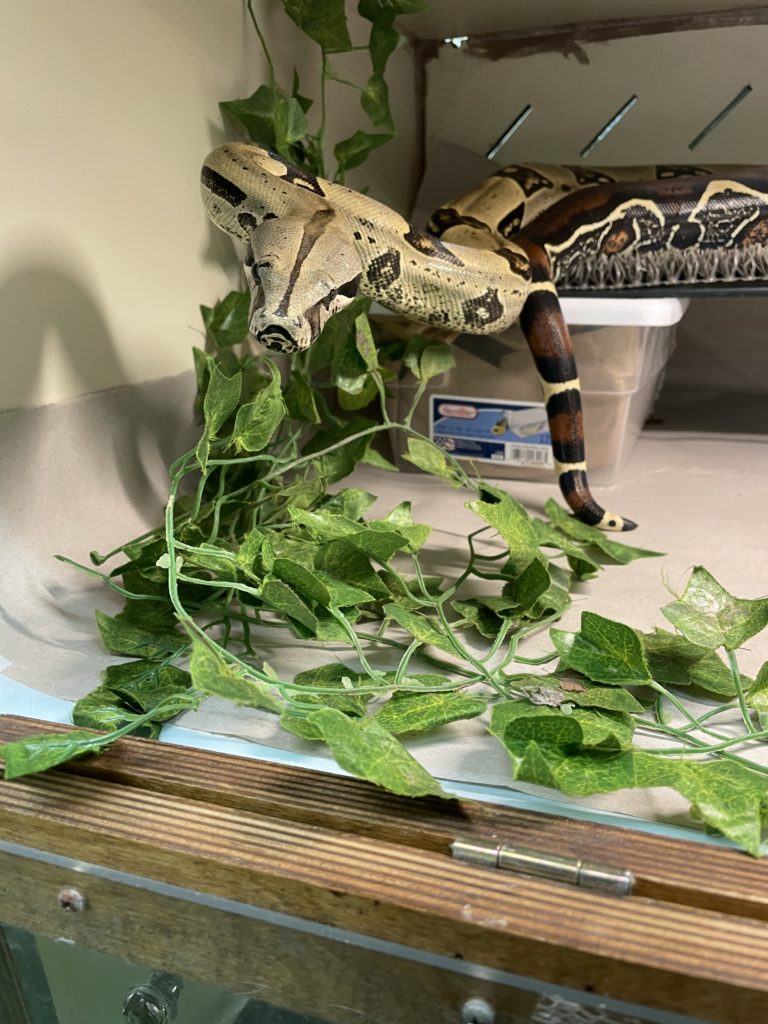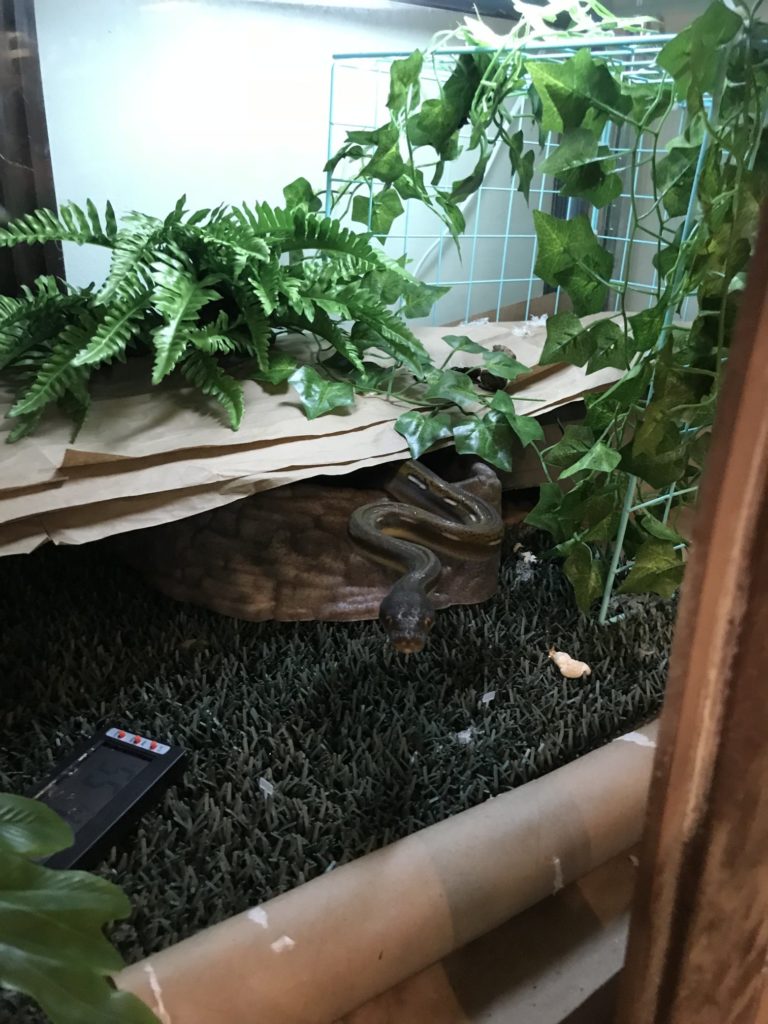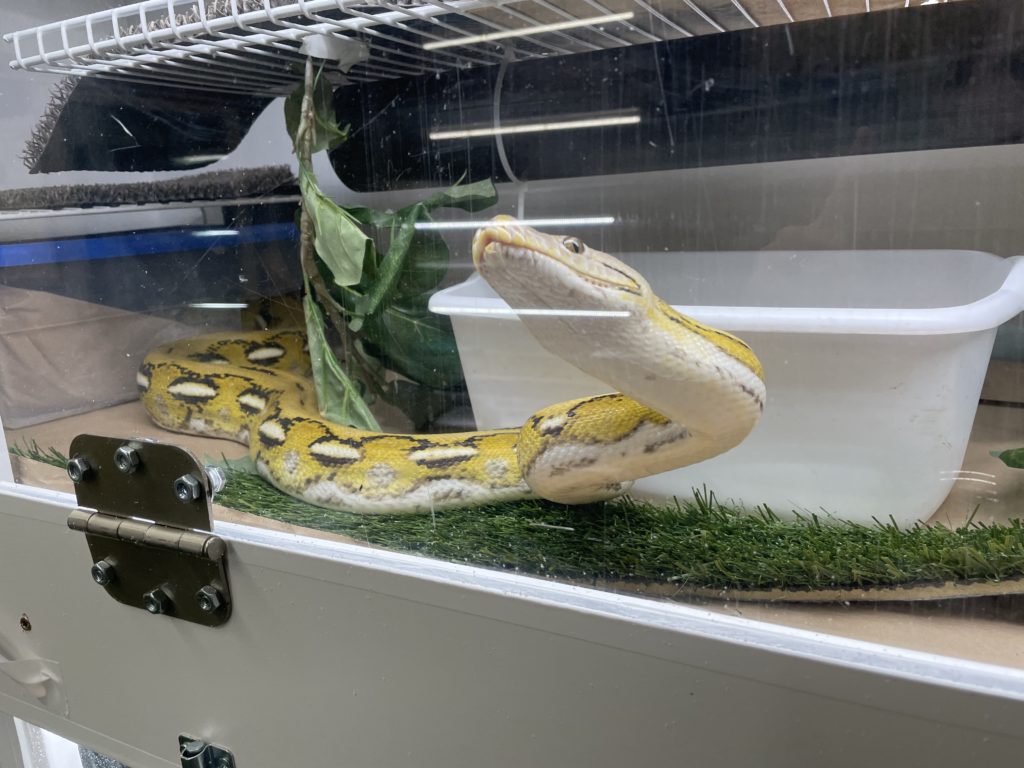
Hook Training vs Tap Training
Correct handling techniques are important when working with these animals. The way we move and interact with them has a tremendous impact on their well being and health. The primary reason to use hook or tap training is to break the feeding response. When used on a scared animal and/or done incorrectly, tap training can back fire and make the animal’s behavior worse. This technique must be used carefully and intentionally with full understanding of the animal’ state of mind.
Tap training refers to “tapping” the snake with something other than your hand before reaching in. This does not mean you should go in quickly and just start tapping your snake without any regard to it’s state of mind. Vigorously tapping a scared snake can make them strike out in defense so this technique must be used carefully. When working with a scared snake we prefer to gently touch or pet the snake either under it’s chin on along it’s back on the last half of it’s body. Tapping a scared snake on top of the head will only make things worse.

This photo shows Legend, a 1 year old reticulated python, in strike position. He is ready to either defend himself or grab food. Gentle petting with a hook lets him know he can relax and that it’s time to come out for handling.
Our goal in gently touching the snake is to give them a little bit of time to wake up, become accustomed to our presence, and to understand that we are not going to hurt them. We continue to gently touch or pet the snake until it begins to move away from us. Moving away is a sign the animal is no longer feeling the need to defend itself. Once this happens you can slowly reach into the enclosure and gently pick them up. For the more defensive snake we will even gently move their head away to point them in a direction away from us. When working with really large animals it helps to also allow them a visual pathway to take away from you when doing this. Handling a snake that is on the run is much safer than a snake in defense mode. Although the next step of keeping up with them and calming them enough to be willing to stay with you once in hand is much different and is the next step in handling techniques after the initial step.
Hook training is essentially the same thing as tap training just with a different tool. We prefer to use a hook for our animals that are scared, defensive, or territorial. Using a hook to gently “tap” (pet or move) your snake before reaching in makes it a little bit easier to gently move them around in preparation for being picked up. The hook can be used to gently scoop up the animal and pull them towards you or partially out of the enclosure. This can really help in getting them to stop a territorial or feeding behavior.
Either way, remember the goal is to communicate with the animal and not scare it. Your movements must be slow and even. Jerky or fast movements during handling/training sessions can cause more defensive behavior.

These videos below show the use of a hook to initiate handling session with several different large reticulated pythons.
Watch Sara explain use of a hook to say hello to Sigel the Burmese python.
Here you can see two videos of retics that are highly socialized and trained. After just a quick set of strokes with the hook they both understand that it’s time to come out for handling.
Notice that we take time to let them come out a little to look around and then again touch them with the hook before making contact.
Here you can see us get Valac out of his hide.
Yellow anaconda in training
Newt is very new to Snake Haus and totally confused. This poor kiddo, like most yellow annies, is extremely food motivated, super stubborn, and strike happy.
He will come right out of his house hoping for food and repeatedly strike at whatever gets close enough. We have started the training process of teaching him how to behave himself. These snakes are very smart and with consistency and patience they can learn how to cooperate.
The first thing we are teaching him is to back off and hide calmly in the back of his enclosure while we clean around him. Once he learns that we will start teaching him how to tolerate being picked up and handled.
We could move much faster and force him to get out of our way, but that would not let him learn how to be part of the process. We will post a video later that shows Yoda the green demonstrating why we do this.
This video is pretty long but it shows his second training session. He is learning fast and I am very pleased with his progress!
Here we see Newt being handled 2 years later and moved to a different enclosure. He is doing much better!

